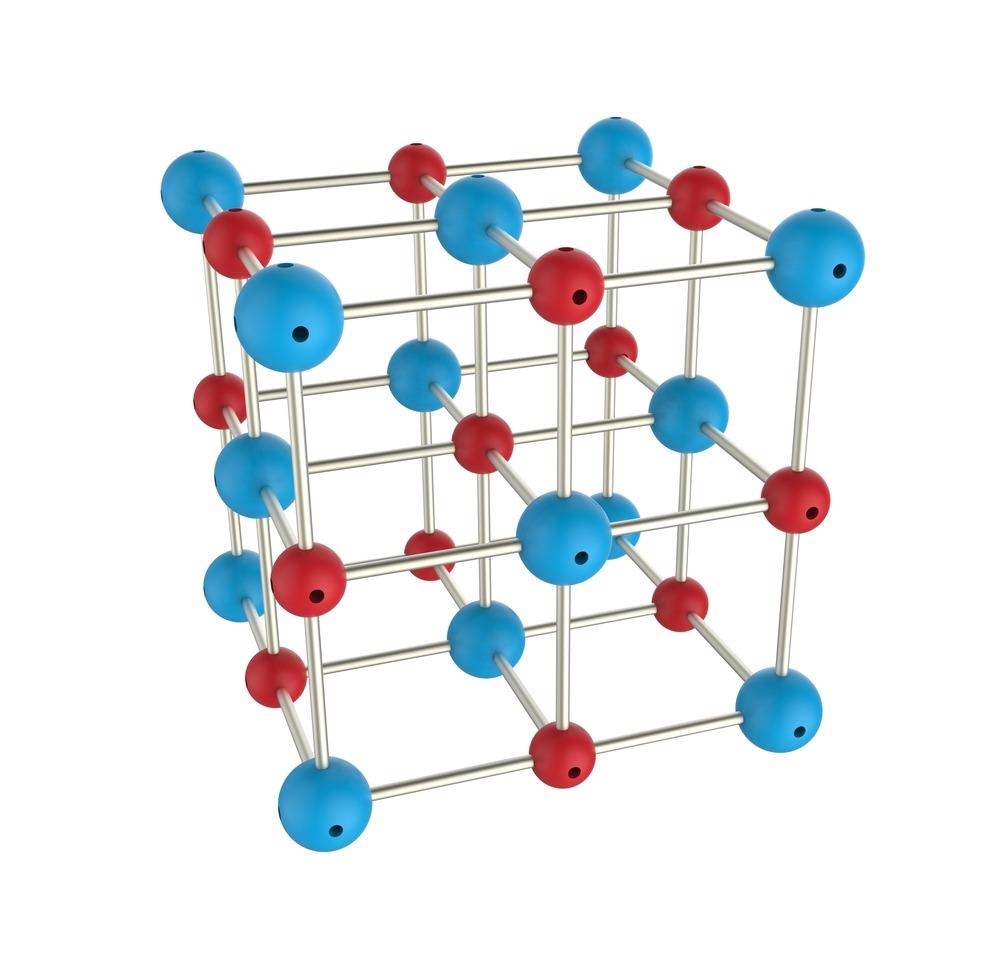The novel technological advancements in the field of material sciences have enabled scientists and researchers all over the world to conduct researches readily and obtain accurate results. Such research was completed at the D.A. University campus, Khandwa, to utilize the technique of raman spectroscopy to obtain information regarding directional atomic displacements in crystalline materials.
Image Credit: Swiss Studio/Shutterstock.com
Although polarized raman spectroscopy has been utilized by researchers globally for several years, this is the first time that it has been implemented for observing, measuring and tracing the displacements occurring at such a micro-level.
It is much easier and more accurate, versatile, and readily available method than the traditional techniques, and has revolutionized the processes of crystalline structural analysis and displacement measurements for future researches.
Raman Spectroscopy
The famous spectroscopy techniques are based on the processes of Infrared and Raman scattering.
These processes are useful for obtaining information about the physical and chemical composition, properties, and arrangement of atoms in a molecule, especially crystalline substances.
Raman spectroscopy utilizes the phenomena of inelastic scattering where energy losses occur.
The scattering process and basic theory behind Raman spectroscopy involve the interaction of a photon with the targeted material. As a result, the energy of the photon is transferred to the constituent atoms of the substance, and they get excited into a high-energy orbit state.
Either energy could be released in the form of radiations, or scattering of the photon particles could also occur. This phenomenon of scattering is utilized for various purposes; however, Raman scattering is particularly useful for microscopic atomic size measurements and structure identification.
Thus, Raman spectroscopy essentially is based upon the core purpose of investigating vibrational behavior, particularly modes of the targeted substance.
Crystalline Molecule Atomic Displacements
Crystalline materials have a well-defined uniform crystalline structure.
The bonds between the atoms could be affected by the inherent increase in vibrational motion due to external factors such as varying temperature, the influence of magnetic or electric fields, externally applied pressure, etc.
To properly investigate these microscopic displacements, knowledge about the directional crystal lattice of the substance is essential.
Classical Techniques
As atomic displacements have been the core of various important research studies, different techniques have been utilized for this purpose. These techniques include the X-ray diffraction process (XRD), X-ray absorption spectroscopy, and the neutron diffraction method.
These require the use of a powerful synchrotron emitter. Their applications are related to the processes of identifying unknown crystalline materials, identification of drugs, investigation of bone structure, local structure of a substance, determination of static structure factor of elements and compounds, etc.
The limitations associated include the requirement of a high consumption strong power source and the need for large-sized macro samples which are very expensive. Apart from this, the X-ray technique is only applicable to crystalline structure analysis; other samples are not readily processed.
In short, the financial as well as technical hurdles have been present from the start. Owing to such problems, Polarized Raman spectroscopy on a test sample of BaTiO3 is utilized in place of the X-ray techniques to compare the results.
Atomic Displacement Tracing Utilizing Raman Spectroscopy
The atomic displacements were successfully analyzed and the results were validated by using Raman Spectroscopy by Dr. B. Krishna and his team. A polarized Raman Spectroscopy (PRO) study was performed on a sample of BaTiO3.
The change in polarizability is directly dependent on the Raman tensor element. Hence, by the utilization of the appropriate polarization method, every small variation in structure could be readily noted. Initially, X-ray diffraction was utilized for out-of-plane configuration.

Image Credit: Forance/Shutterstock.com
A 473 nm laser integrated Raman spectrometer provided the excitation signal. The experimental setup for low-temperature Raman spectroscopy utilized a Linkam, U.K-made THMS600 operating with the thermal stability of 0.10.
The study revealed that Raman intensity is strongly dependent on diagonal elements of the Raman tensors, with the polarization process heavily dependent on the inter-atomic distances.
It is known that a low temperature leads to the multi-domain formation, however, the Raman spectra are useful in the identification of the orientation of the crystallographic axes.
The displacement of Ti -ion was enumerated by the Raman shift of the A1 (TO2) displacement vibrational mode implementing the phonon deformation potential technique, represented by Dr. Pezzotti in his study.
The values obtained matched with the previous experiments and were also verified with previous research studies. The component of polarization in the current study along distinct crystalline axes in various phases matches well with previously published values derived using neutron diffraction. Henceforth, this confirms the accuracy of the efficient PRS technique for determining atomic displacements.
This technique offers various advantages, such as the ability to track atomic displacements even smaller than on the nanoscale, while results are obtained with better spatial resolutions.
The straightforward and diverse technique does not require any special necessities as opposed to the commonly performed Raman Spectroscopy techniques utilized.
However, a downside to the process is that the information regarding the crystalline structure alterations isn’t specific for a given time in point; rather, an averaged result over probing volume is efficiently obtained in a spectral time scale.
Hence, at a particular amount of time, the process can accurately provide averaged displacement results, not instantaneous information. The advantages of this technique overshadow this sole limitation, in the long run, as it continues to be the most efficient method.
In a nutshell, the PRS technique has revolutionized the study of the directional displacement of atoms in crystalline materials. The A1 (TO2) mode revealed that Ti-atoms were displaced away from the octahedral crystal.
This displacement was measured accurately and the Eigenvectors provided the necessary information about atomic vibrations. It is not wrong to declare that the novel implementation of PRS would surely assist in the comprehension of various unresolved phenomena in condensed matter physics, as well as other fields such as material science and technology, nanotechnology, and chemical matter studies.
References and Further Reading
De, B. K., Dwij, V., Kunwar, H., Rana, S., & Sathe, V. G. (2021). Tracing microscopic atomic displacements using polarized Raman spectroscopy: A case study on BaTiO3. Journal of Physics D: Applied Physics. doi: https://iopscience.iop.org/article/10.1088/1361-6463/ac2c39
Richer, C., Zschornak, M., Novikov, D., Mehner, E., Nentwich, M., Hanzig, J., . . . Gorfman, S. (2018). Picometer polar atomic displacements in strontium titanate determined by resonant X-ray diffraction. Nature Communications.https://europepmc.org/article/pmc/pmc5766522
Sivakumar, A., Jude Dhas, S. S., Sivaparkash, P., Kumar, R. S., Arumugam, S., Arumugam, Permaul, K. (2021). Raman Spectroscopic and Electrochemical Measurements of Dynamic Shocked MnFe2O4 Nano-crystalline Materials. Journal of Inorganic and Organometallic Polymers and Materials. https://www.researchsquare.com/article/rs-759475/v1
Smith, E., & Dent, G. (2019). Modern Raman Spectroscopy: A practical Approach. Pondicherry: Willey. http://www.chemistry.uoc.gr/lapkin/Modern_Raman_Spectroscopy__A_Practical_Approach.pdf
Disclaimer: The views expressed here are those of the author expressed in their private capacity and do not necessarily represent the views of AZoM.com Limited T/A AZoNetwork the owner and operator of this website. This disclaimer forms part of the Terms and conditions of use of this website.